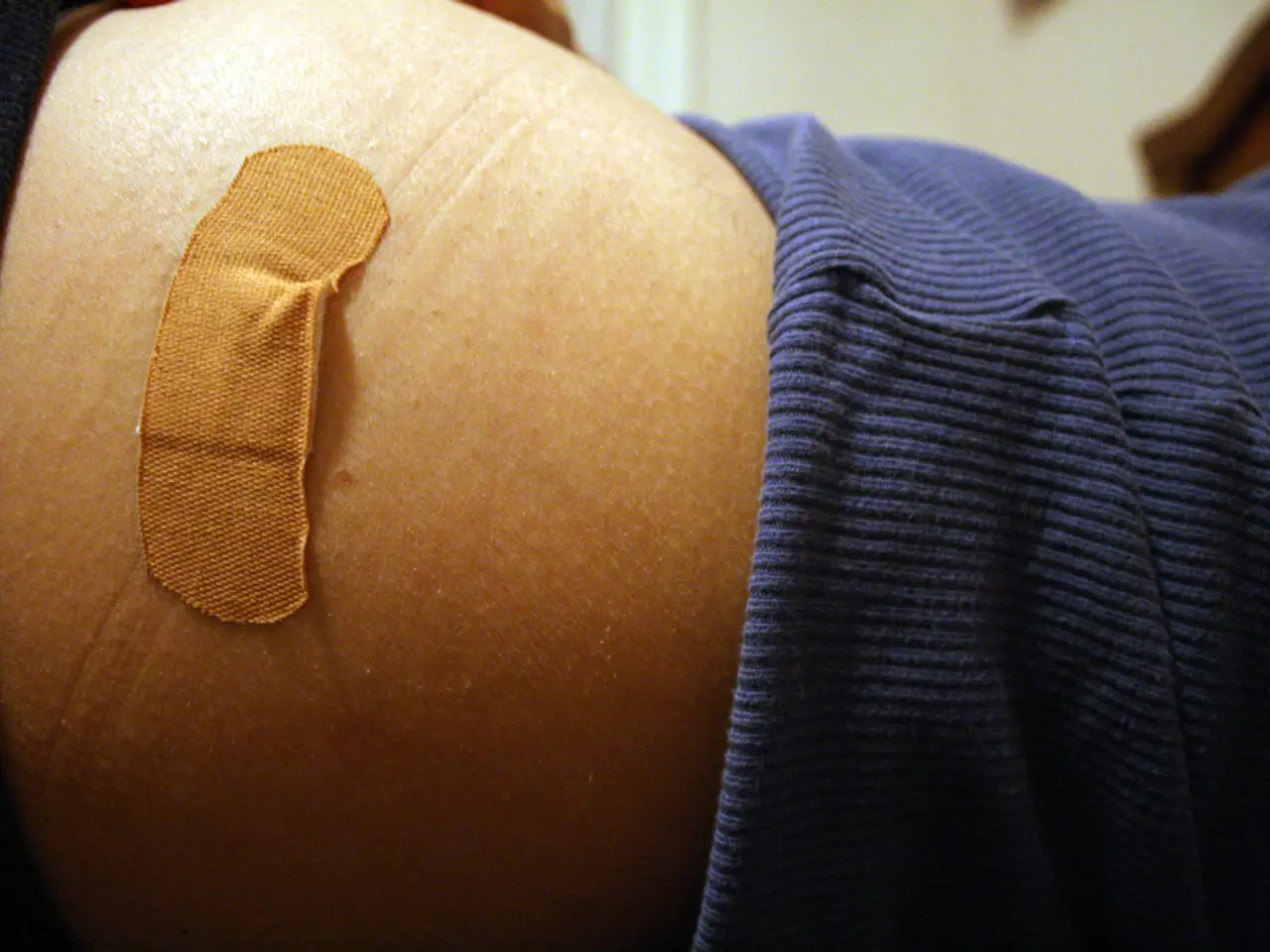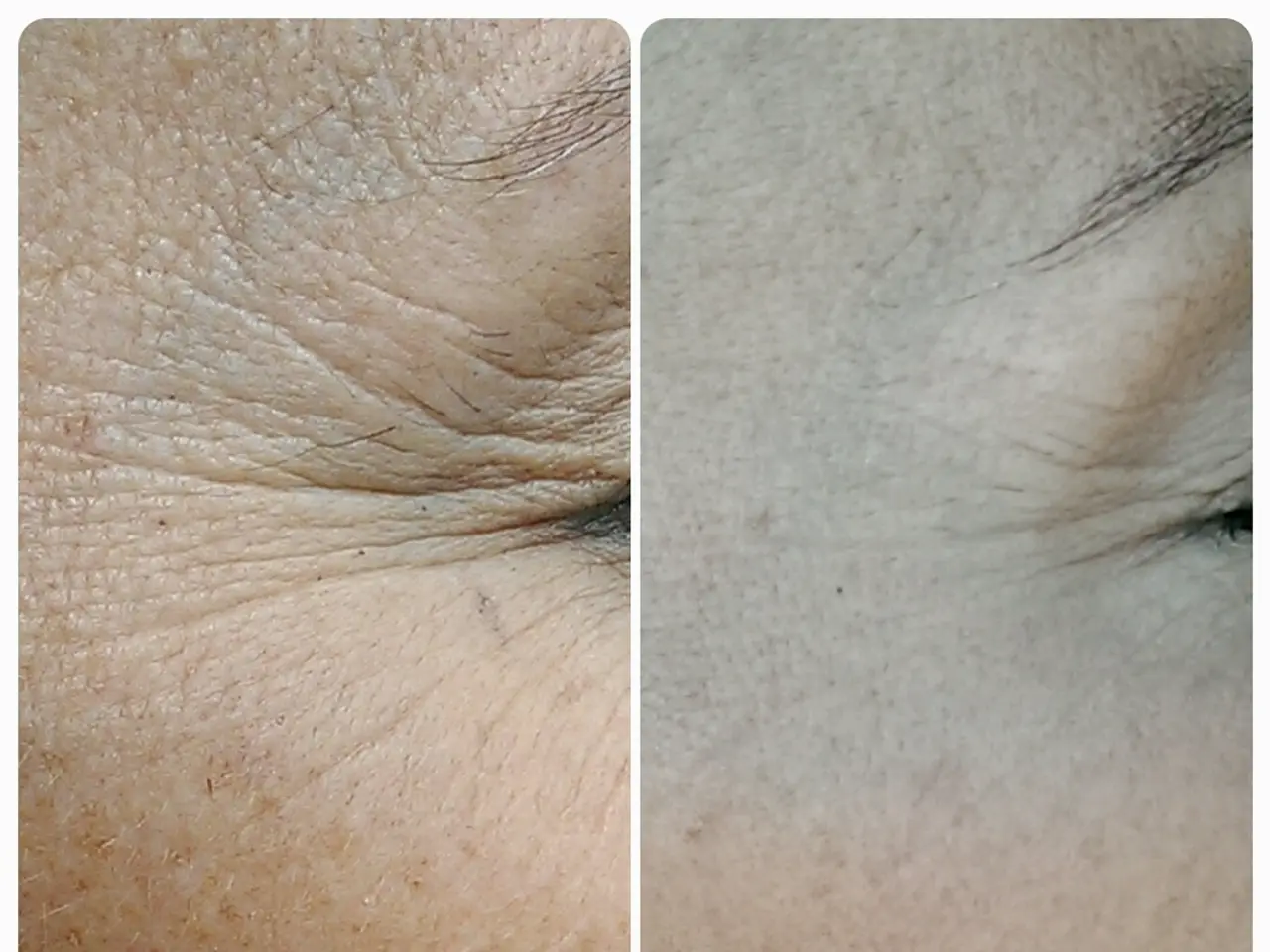Options for managing persistent migraines, detailed
Migraines can be a debilitating condition, causing severe headaches and other symptoms such as nausea, vomiting, and sensitivity to light and sound. In this article, we explore the various treatments available for migraines, both preventive and acute.
Preventive treatments are designed to reduce the frequency, severity, and duration of migraines. These treatments, which include anticonvulsants, beta blockers, antidepressants, calcium channel blockers, Botox, and CGRP monoclonal antibodies, can take several weeks to months to become fully effective.
Anticonvulsants like topiramate and valproate, beta blockers such as propranolol and metoprolol, calcium channel blockers like verapamil, tricyclic antidepressants such as amitriptyline, Botox (onabotulinumtoxinA) for chronic migraine, and CGRP monoclonal antibodies (erenumab, fremanezumab, galcanezumab, eptinezumab) are some of the most effective evidence-based preventive treatments for migraine.
Botulinum toxin injections are specifically approved for chronic migraine prevention, with effects observed over approximately three months. CGRP monoclonal antibodies are a newer, effective class of migraine preventives that often start showing benefit within weeks.
Preventive treatments are recommended for individuals with frequent (≥4 attacks/month), disabling, or medically refractory migraines. Botox is FDA-approved for chronic migraine (≥15 headache days/month), and CGRP monoclonal antibodies are newer preventive options with good evidence of efficacy.
Acute treatments, on the other hand, are designed to relieve pain during migraine attacks. These treatments typically involve Non-Steroidal Anti-Inflammatory Drugs (NSAIDs) like ibuprofen, triptans, and other prescription medications. For those who experience nausea or vomiting, an antinausea treatment may be complementary.
To ensure the best results, it's crucial to take acute treatments at the very onset of the migraine attack. As-needed treatments can also be a vital part of a person's migraine treatment regimen.
It's important to note that certain treatments can be more effective based on a person's individual medical history and tolerances. Coexisting medical conditions, such as high blood pressure, depression, and anxiety, may require a customized preventive treatment.
Educating a person about their treatment before starting is beneficial. This includes understanding the onset of effectiveness, potential side effects, and the importance of adhering to the treatment plan. For preventive treatments, it's recommended to stick to a treatment, without side effects, for 4-6 months if a person is headache-free or close to headache-free (0-4 headache days monthly).
In recent years, several devices have been approved by the Food and Drug Administration (FDA) for the treatment of migraine, including external trigeminal nerve stimulation, remote electrical neuromodulation, transcutaneous vagus nerve stimulation, noninvasive multichannel brain neuromodulation system, and single pulse transcranial magnetic stimulation. However, the downside of these devices is their cost, as insurance companies often do not cover them.
Cognitive behavioral therapy, biofeedback, acupuncture, magnesium supplements, riboflavin supplements, yoga, and other integrative therapies can complement a medical treatment regimen.
Remember, each person with migraine is unique, and their treatment regimen must be individualized to be effective. The most effective treatments are the evidence-based treatments mentioned, but each person has a different medical history and different tolerances to medication.
Sources:
- Premera Medical Policy 2025 - migraine prophylaxis and Botox efficacy
- Augusta Health migraine preventive treatments overview 2025
- PMC Article 2024 - CGRP antibodies, preventive treatment indications and timing
- GoodRx migraine treatment guide 2025
- Seekers of effective migraine treatments should consider preventive options such as topiramate, propranolol, Botox, and CGRP monoclonal antibodies, which are proven through science to reduce the frequency, severity, and duration of migraines.
- Botulinum toxin injections, or Botox, can be a switcher for those experiencing chronic migraines, offering relief for approximately three months.
- For migraine sufferers with coexisting medical conditions, a customized preventive treatment plan may be recommended, considering factors like high blood pressure, depression, or anxiety.
- Acute treatments, like triptans and Non-Steroidal Anti-Inflammatory Drugs (NSAIDs), should be taken at the onset of migraine attacks for best results.
- Integrative therapies, such as cognitive behavioral therapy, acupuncture, and yoga, can complement a migraine treatment regimen and help improve overall health and wellness.
- Despite the various treatments for migraines, it's essential to remember that each persona with migraine is unique, requiring an individualized treatment plan tailored to their medical history and tolerances.




